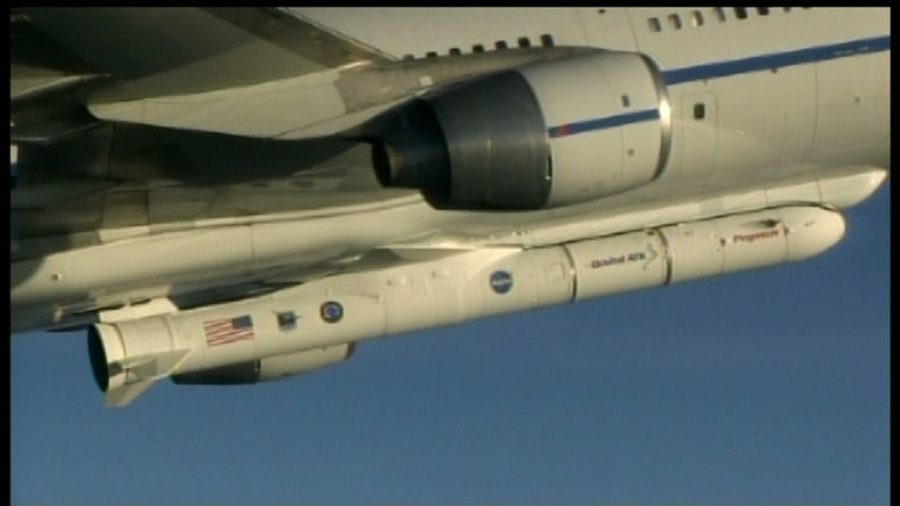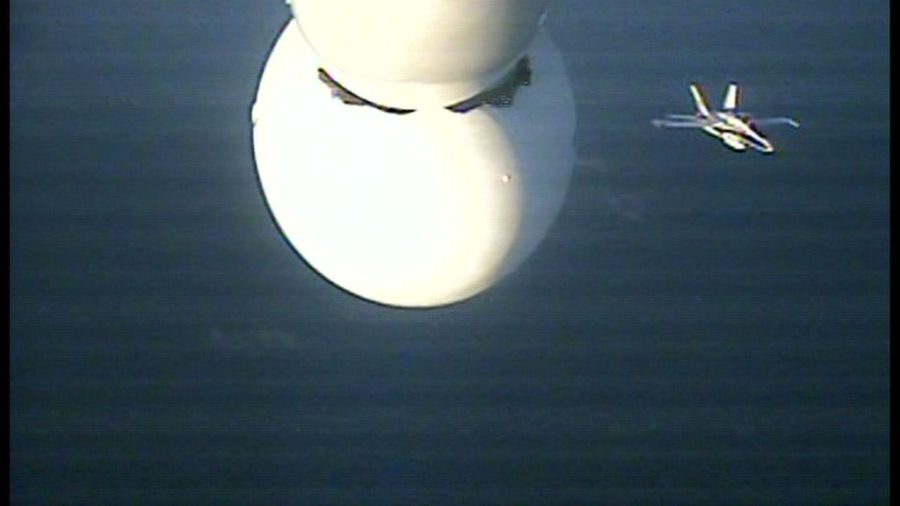At 8:37 a.m. NASA's CYGNSS mission began with launch aboard the Orbital ATK Pegasus XL rocket. Stand by for updates from ascent.
At 8:37 a.m. NASA's CYGNSS mission began with launch aboard the Orbital ATK Pegasus XL rocket. Stand by for updates from ascent.
Pegasus is away!
At 45 seconds prior to drop, the Pegasus XL's fin battery will be activated and the fins will be unlocked. Pegasus XL soon will be announced "go" for launch. Standing by for the drop.

The Eastern Range, NASA and Orbital ATK teams are go to proceed with launch.

View from the chase plane. Credit: NASA TV
Standing by for the next poll of the NASA launch team.
Weather continues to look good for launch. Coming up, NASA Launch Manager Tim Dunn will poll the NASA team. Launch is on schedule for 8:35 a.m. EST.

The L-1011 "Stargazer" aircraft carrying the Pegasus XL rocket is beginning its second 180-degree course reversal. This turn will put the vehicle on the path to the drop point. The release mechanism for the rocket is armed and the CYGNSS spacecraft is on internal power.

The rocket's flight termination system has been transferred to internal power and verified to be working properly. This system would be used by the Eastern Range to end the flight if the rocket were to go off course.

The L-1011 pilot has confirmed the aircraft has reached the deployment altitude of 39,000 feet. A recent survey of the Pegasus XL rocket on the belly of the plane, conducted from video filmed from the chase plane, revealed the vehicle to be in good shape.